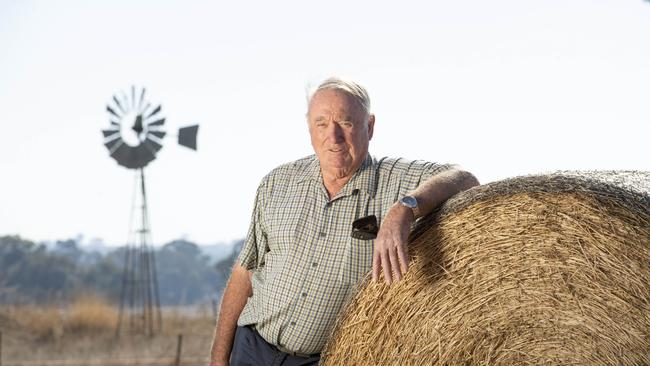The worst start to the growing season in 20 years puts farmers on the back foot
Farmers are dealing with shock and stress over the failed autumn break across much of south eastern Australia, in what has been described by some as the worst start to the season for almost two decades.
Farmers across southeast Australia are pinning their hopes on forecast rain in the next week as they battle with the fallout of a failed autumn break.
In what has been described by some as the worst start to the season for almost two decades, much of Victoria’s cropping country has been sown dry, while livestock producers from the North East to the South Australian coast are budgeting on feeding animals until spring.
The exception is central Victoria, which snagged enough rain to push farmers in that region to above-average totals for the season to date.
According to livestock producers, compounding the dry conditions is the “absolutely worst” income-to-costs balance sheet experienced in the past 20 years.
Albury NSW stock agent Gerard Unthank, from Brian Unthank Rural, said areas such as the Upper Murray would not have feed until spring, after autumn rain failed.
Corryong has measured just 146mm of rain for the year including less than 2mm for May, compared to a long-term average for the month of 57mm. Frosts had already started in the area, with the mercury dropping to minus-1.8C in mid-May, causing soil temperatures to plummet.
“I think there is a bit of a shock factor in there that the season has failed,” Mr Unthank said.
Mr Unthank said almost all cattle in the Upper Murray would need supplementary feeding to get them through the winter.
It’s a similar story in the Western District and South Australia’s South East, with Casterton measuring just 78mm from January to May, compared to a long-term average of 208mm, and Naracoorte recording 83mm against an average of 135mm.
Lachlan Tindall, who runs a 700-cow dairy and 500 beef cows at Carapook, northeast of Casterton, said he received just 20mm of rain in mid-January and “practically nothing since”.
Mr Tindall said conditions were the worst seen in the area since 1967 with labour costs also spiralling with supplementary feeding.
“We are chewing through our fodder stocks – my big concern is going forward it will take three to four years to build up our reserves again and we will need really good springs to do that,” Mr Tindall said.

Pigeon Ponds farmer Tim Leeming described current conditions as “probably the toughest ... we will face in our careers”.
He said western Victoria was experiencing the worst late break since at least 2005 and compounding the issues for sheep producers was the “perfect storm” of record high pregnancy scanning percentages.
Elders Naracoorte branch manager Tom Dennis said “our paddocks are bare and clients are expecting to have to feed all their livestock for the next 100 days, at least until the end of July”.
“South of Mount Gambier is a moonscape, as dry as I have seen it in my 17 years here,” Mr Dennis said.
In Victoria’s North East, Rutherglen farmer Andrew Russell said the season had tightened and while rain in early April had been a starting point, a lack of follow-up falls had stalled growth.
“We’ve had very little since that early rain and the question now is whether we will be able to get stock on our grazing cereals this year,” Mr Russell said.
Mr Russell had hay to sell but now is holding back supplies for his own stock.
“The amount of phone calls I am getting to buy hay shows how dry it is,” he said.
In central Victoria, Bendigo has recorded 206mm so far this year against an average of 182mm to the end of May.
Agriculture Victorian seasonal risk agronomist Dale Grey said central Victoria had been lucky enough to be under tropical rains in May which were “summer-like”.
“The problem was it was in central Victoria only, and didn’t go north, south, east or west,” Mr Grey said. “In the Western District, it’s not often they get a break in June and nearly always get a break in April, but not this year.”
Mr Grey said there was some hope for rain in the next week, with a break in high pressure systems which had been pushing rain away.
FEEDING 100 ROLLS OF HAY A WEEK:
It’s the worst autumn that Howlong farmer Robert Reid has ever seen in his decades of farming in the area.
And the southern NSW cattle producer and cropper knows that even if it does rain in June, it will be too late to grow much feed.
Mr Reid and his family are currently feeding out about 100 rolls of lucerne hay a week to his herd of about 1000 Hereford cattle, and some are getting grain too.
He said they were fortunate they had more than 2000 round bales still in storage – enough to get them through another four to five months of feeding, though he hopes the season will turn around before that.

But with weeks of blue skies and unseasonally warm late autumn weather, Mr Reid said this year was a challenge.
“It would be good weather if you wanted to go on a picnic, but it is no picnic being a farmer at the moment,” Mr Reid said.




